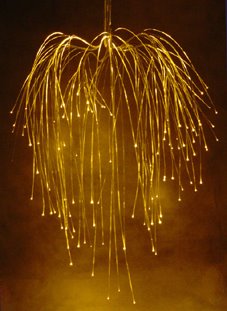I was recently asked to answer the question “Can the art of lighting design keep up with the science, or will creativity vanish and lighting design become the victim of its own technology?”
One could also ask if design ever kept up with technology when it comes to lighting. I have studied the history of lighting and with every new technology, it took some time for designers to really understand it and use it to the best advantage both aesthetically and practically.
I see this happening with LED lighting now. Despite the fact that standard incandescent lamps are being phased out here in Australia, the amount of real engagement with this technology is comparitively small both here and internationally.
But why is this so?
LED lighting for commercial / domestic purposes is only a percentage of the total LED market (the figure of 30% was given to me recently). So lamp manufacturers make more money out of automotive and similar applications and there is a smaller incentive to develop this area.
There is also an issue that the solid-state industry itself is still developing. There is litigation on patents, uncertainty on standards and still some variation in the quality of LED supply.
However, more generally I think it is because new light sources are hard to understand. We evolved as a species with the sun (a burning object) as our main light source. Incandescent lamps are the closest proximity to this in terms of artificial lighting. So most luminaire designers, in particular, are either incapable or unwilling to learn about say, LED’s, and understand their particular properties. Design competitions and magazines still feature luminaires designed for conventional light sources.
I wonder if there is also a sense that designers design fittings like they were furniture – an emphasis on “ object “ type qualities such as form, material etc without any real understanding of the technology.
Sunday, November 2, 2008
Subscribe to:
Posts (Atom)
